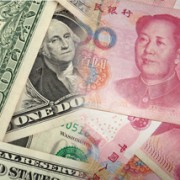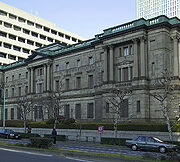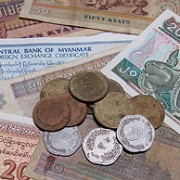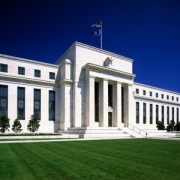Finance sector development

One of the most notable developments in the world economy over the past 20 years has been the rise of the People’s Republic of China (PRC) and India as global economic powers, accompanied by high overall growth and an increase in their financial activity. But how much have the PRC and Indian firms used and benefitted from the expansion in capital markets to obtain financing and grow? In a new paper (Didier and Schmukler, 2013), we study this question by assembling a unique and comprehensive data set on domestic and international capital raising activity and performance of publicly listed Chinese and Indian firms.
Finance sector development

One benefit of the fragile yet continuing growth in the United States (US) economy over the last 12 months is the restraining effect it has had on US political leaders who regularly clamor for the US to punish the People’s Republic of China (PRC) to raise the value of its currency. The PRC’s exchange rate policy and the presumed threat it poses to US jobs has been a topic of debate in the US Congress for years. Critics of the PRC maintain that the US president, no matter what the political party, needed to staunch the flow of US jobs to the PRC by demanding that it increase the value of the renminbi or be punished by being labeled a currency manipulator.
Finance sector development

The Bank of Japan (BoJ) announced its much-awaited new monetary policy framework on 22 January 2013, following heightened pressure from newly-elected Japanese Prime Minister Shinzo Abe for it to pursue “unlimited” monetary easing in order to finally overcome deflation. The new framework has two major elements: a “price stability target” of 2% for the consumer price index (CPI) and an “open-ended asset purchasing method” for its Asset Purchasing Program (APP). Although the BoJ did not commit itself to a deadline for achieving 2% inflation, it said that it would aim to achieve this target “as early as possible.” The main innovation of the “open-ended” purchasing method is that the BoJ does not set a target date for ending the program, unlike previous programs.
Finance sector development

The International Monetary Fund (IMF) has just released a new policy paper on capital flows (IMF 2012). A recent editorial in the Financial Times describes it this way: As far as intellectual shifts go, the U-turn by the International Monetary Fund on capital controls is remarkable. In the 1990s, the IMF came close to including the promotion of capital account liberalisation in its rule book. On Monday, after a thorough three-year review, the fund has accepted institutionally that direct controls can play a useful role in calming volatile, international capital flows. (Financial Times. 3 December 2012)
Finance sector development
During the 2008 financial crisis, Asia experienced exchange rate volatility and liquidity shortages of the key currency—the US dollar—that severely affected trade within the Asia-Pacific Economic Cooperation (APEC) region. The dollar is crucial to maintaining financial market stability at an appropriate liquidity level. While the dollar is expected to remain the key currency in the foreseeable future, the crisis has led to a rethinking of the global economy’s over-reliance on the dollar and its capital and financial markets, and the need to enhance the role of emerging currencies and their markets.
While it will take time for emerging market currencies to become significant reserve currencies, their growing importance in the settlement of cross-border trade and investment can no longer be ignored. Read more.
Finance sector development

The economy of the Republic of Korea (henceforth Korea) has been on a steady growth path despite the global financial and eurozone crises. Recently, Fitch and S&P, the global credit rating agencies, upgraded Korea’s sovereign credit rating by one notch. Fitch’s rating for Korea, AA-, is the fourth-highest rating on its rating scale and a notch higher than those of the PRC and Japan. Notwithstanding these positive signs, Korea’s economy faces many internal and external challenges. One of the most serious is excessive household debt. Korea’s household debt has increased drastically since 2000. For the past 12 years, household debt has increased by an average of 13.3% every year, far in excess of the average annual nominal GDP growth rate of 6.2% during the same period.
Finance sector development

In analysing the European financial crisis, Asia’s experience with the 1997 Asian financial crisis is a useful point of reference. After the forced devaluation of the Thai baht, encouraged by the People’s Republic of China (PRC) and Japan, Thailand was compelled to accept the IMF-imposed austerity programs. As part of the contagion that followed the baht crisis, Indonesia and the Republic of Korea also accepted the IMF program. As the IMF’s prescriptions reduced aggregate demand and contained no “pro-growth” elements, they worsened the crisis in these Asian countries. In contrast, Malaysia rejected the IMF’s prescriptions. The different experiences of these crisis-hit Asian economies led to a change in thinking on the productiveness of “straight” austerity programs as a response to the financial crises. Austerity policies were relaxed and pro-growth policies introduced, which in combination, helped Asia to recover from its financial crisis.
Finance sector development

Myanmar’s exchange rate reform is a fundamental change, but it is not unique. A striking parallel can be found in Viet Nam’s move in the late 1980s to unify its multiple exchange rates into a single rate and its corresponding announcement of exchange rate management through a managed float, just as Myanmar is doing now. The experience of Viet Nam in reforming its exchange rate system—both good and bad—offers valuable lessons for Myanmar. The aim of this piece is to try to draw out some of these lessons. The objective is not to recommend that Myanmar should uncritically follow the lessons from the Viet Nam experience, but that the country should adopt these lessons to its own circumstances.
Finance sector development

The international dollar standard is malfunctioning. The Fed’s reduction of the interest rate on Federal Funds to virtually zero in December 2008 (a move that was followed by major European central banks) exacerbated the wide interest rate differentials with emerging markets and provoked world monetary instability by inducing massive hot money outflows by carry traders into Asia and Latin America. The disruption could be partially justified if it had helped the United States recover from the 2008–2009 financial crisis. However, evidence suggests otherwise. Speculative money flooding into emerging markets by “carry traders” causes local currencies to be overvalued.
Finance sector development

Two episodes of quantitative easing (QE) by the United States (US) Federal Reserve Bank (Fed) since early 2009 aroused widespread concerns in emerging Asia and elsewhere because of the possibility that they would weaken the US dollar (so-called “currency wars”) and stimulate capital inflows in emerging economies that might lead to increased inflationary pressures and asset price bubbles. For example, the vice minister of finance of the People’s Republic of China (PRC), Zhu Guangyao, said on 18 November 2010 that “As a major reserve currency issuer, for the US to launch a second round of quantitative easing at this time, we feel that it did not recognize its responsibility to stabilize global markets and did not think about the impact of excessive liquidity on emerging markets” (Reuters 2010).















Recent Comments